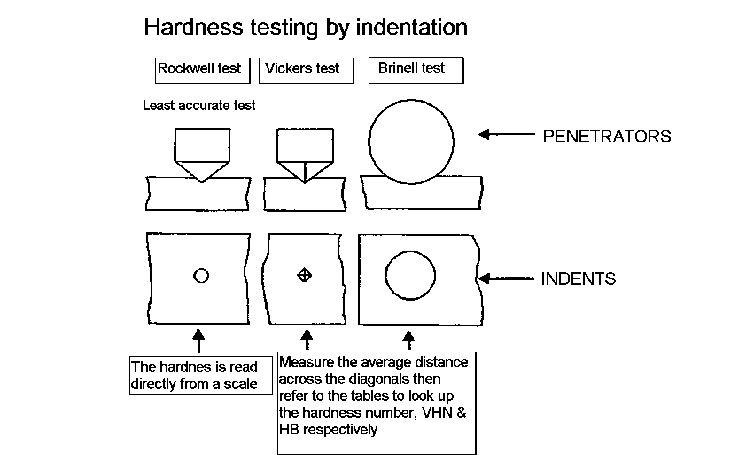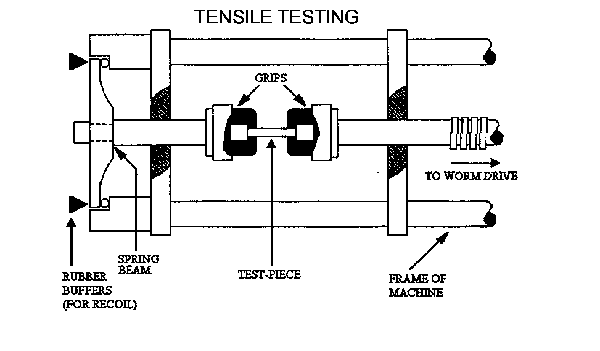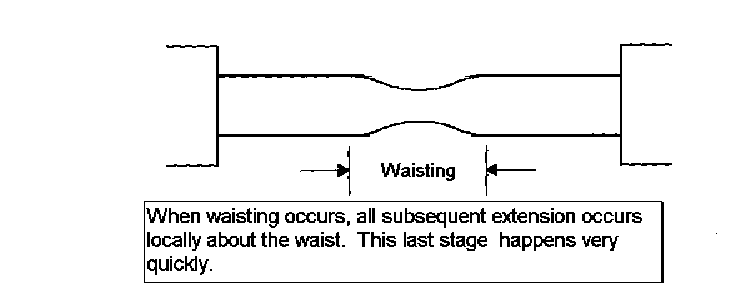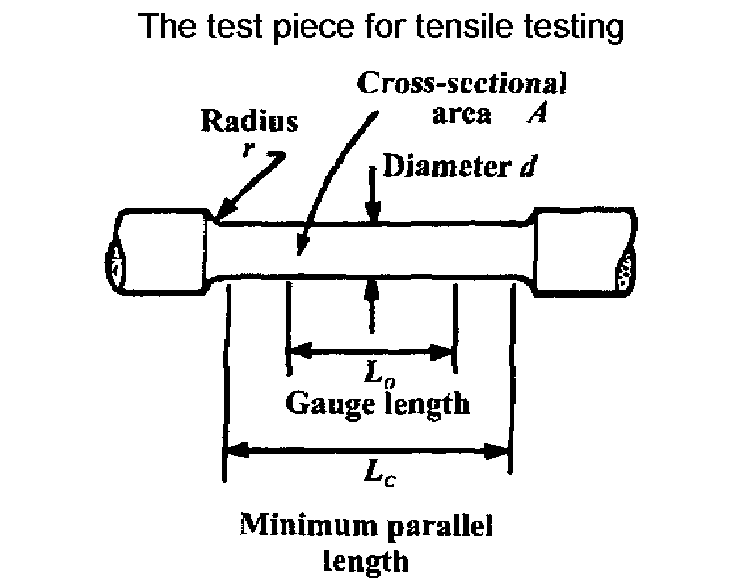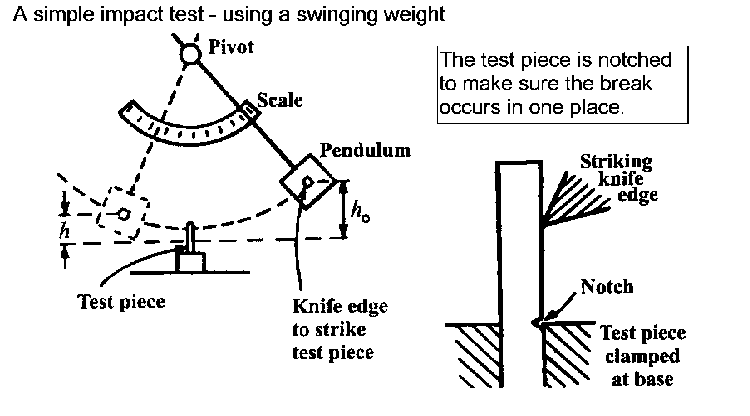
Materials Testing
Simple qualitative tests on materials can easily be carried out in the workshop, however the official or recognised tests are described in the section below. Test for hardness by attempting to dent the material with a centre punch and hammer. Also try cutting or filing the sample. Test for impact by holding the sample in a vice and then allowing a hammer to swing down and strike it. Test for toughness by repetive bending. Test for compressive strength by squashing samples in a vice. Tensile strength by adding weights to a suspended wire and noting the increase in length or how quickly it fails. Test for density by weighing the sample and dividing by its volume. ( If all the samples have the same volume a direct comparison can be made without any calculation.) Test for thermal conductivity by sense of touch. Test for stiffness/flexibiliy by applying a force and noting any bending. Also note the colour of the materials and any metallic sheen etc.
The "official" tests Materials testing can be carried out on most materials some tests are really comparative while some give an absolute measure. The main tests are:-
|
|
